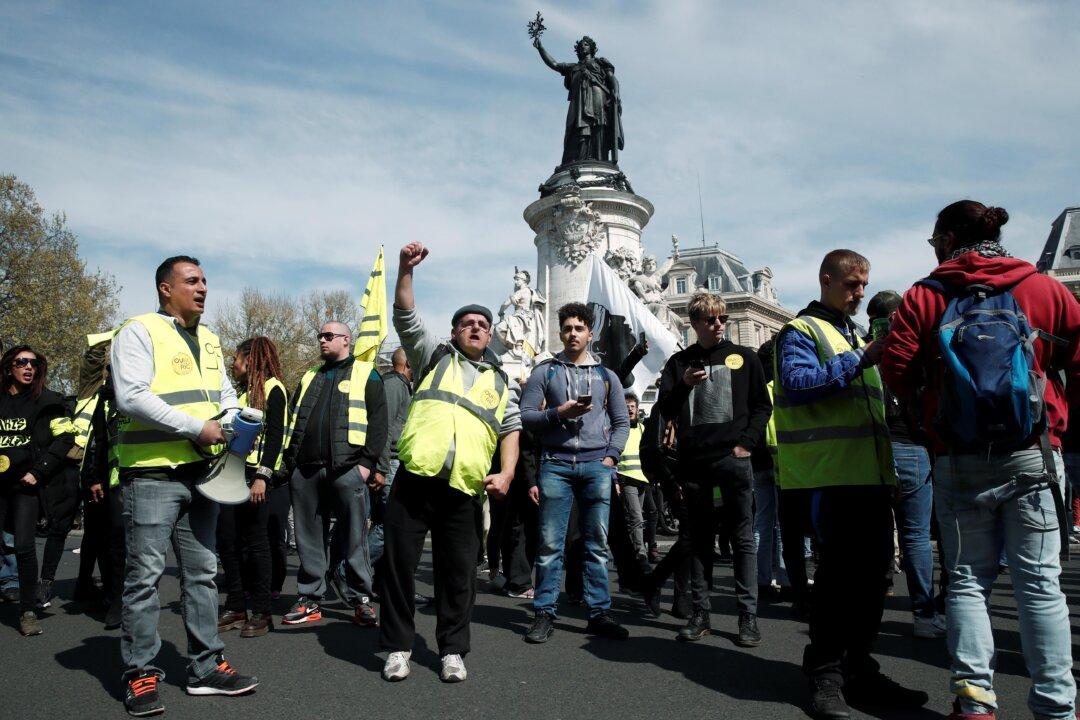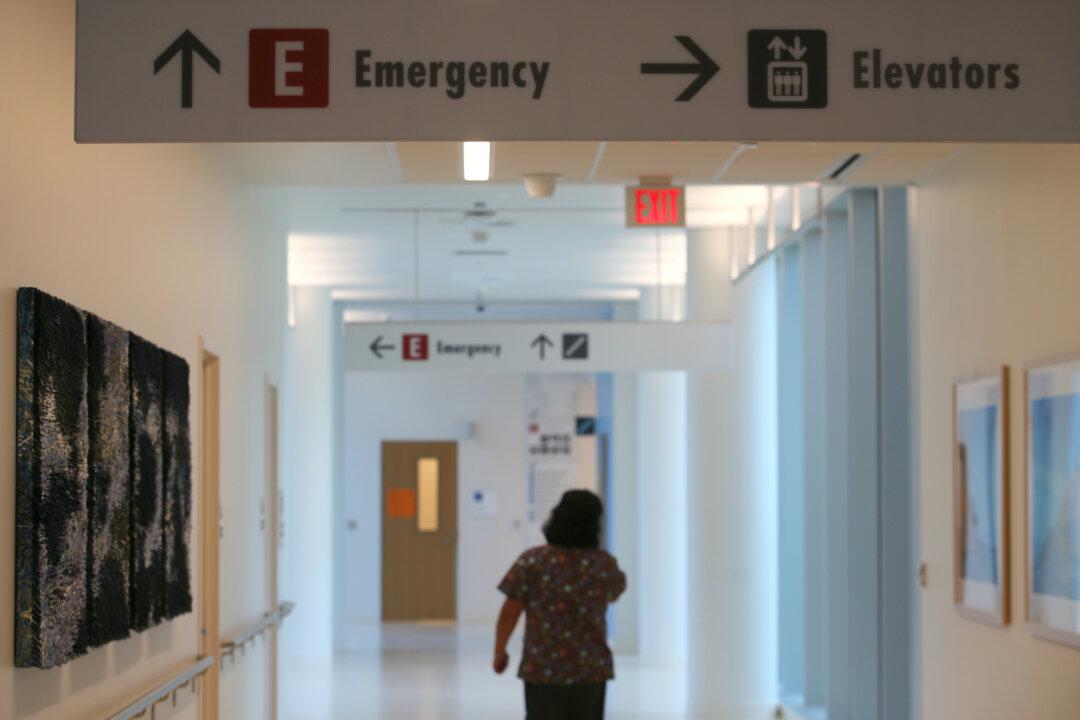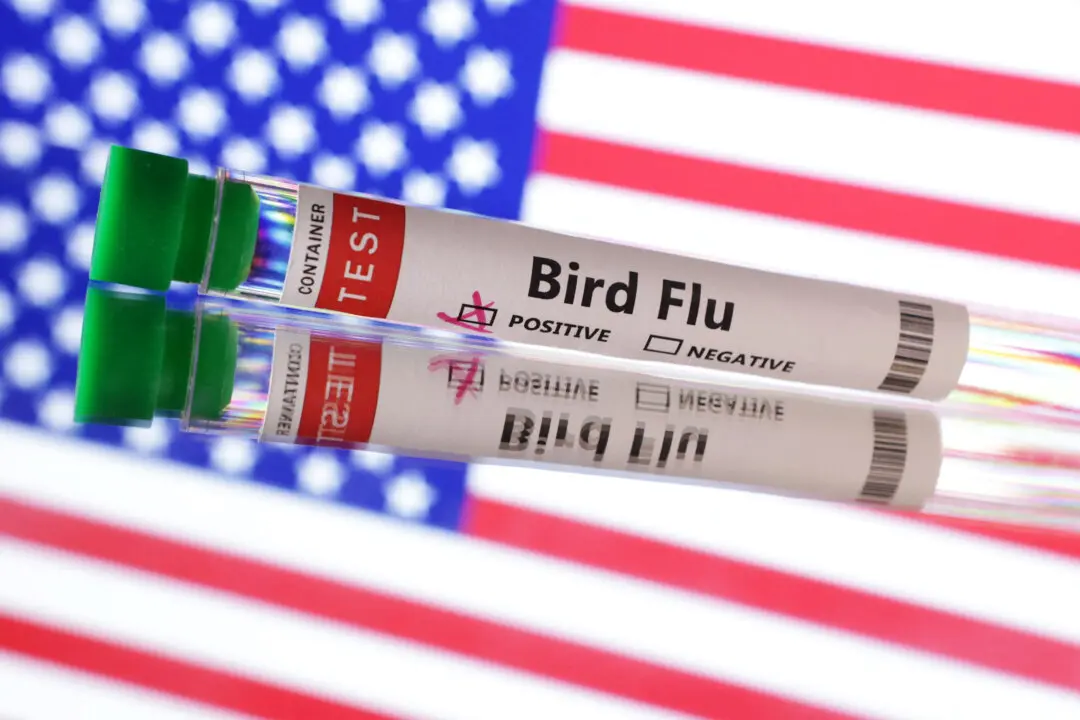PARIS—Thousands of demonstrators took to the streets of Paris and other French cities on April 6 for a 21st straight weekend of anti-government “yellow vest” protests, but turnout was sharply lower than last week and the marches were largely peaceful.
The quieter nature of the demonstrations should be a relief to President Emmanuel Macron, who this week wrapped up two months of nationwide town hall meetings as part of his “grand debate” initiative.





